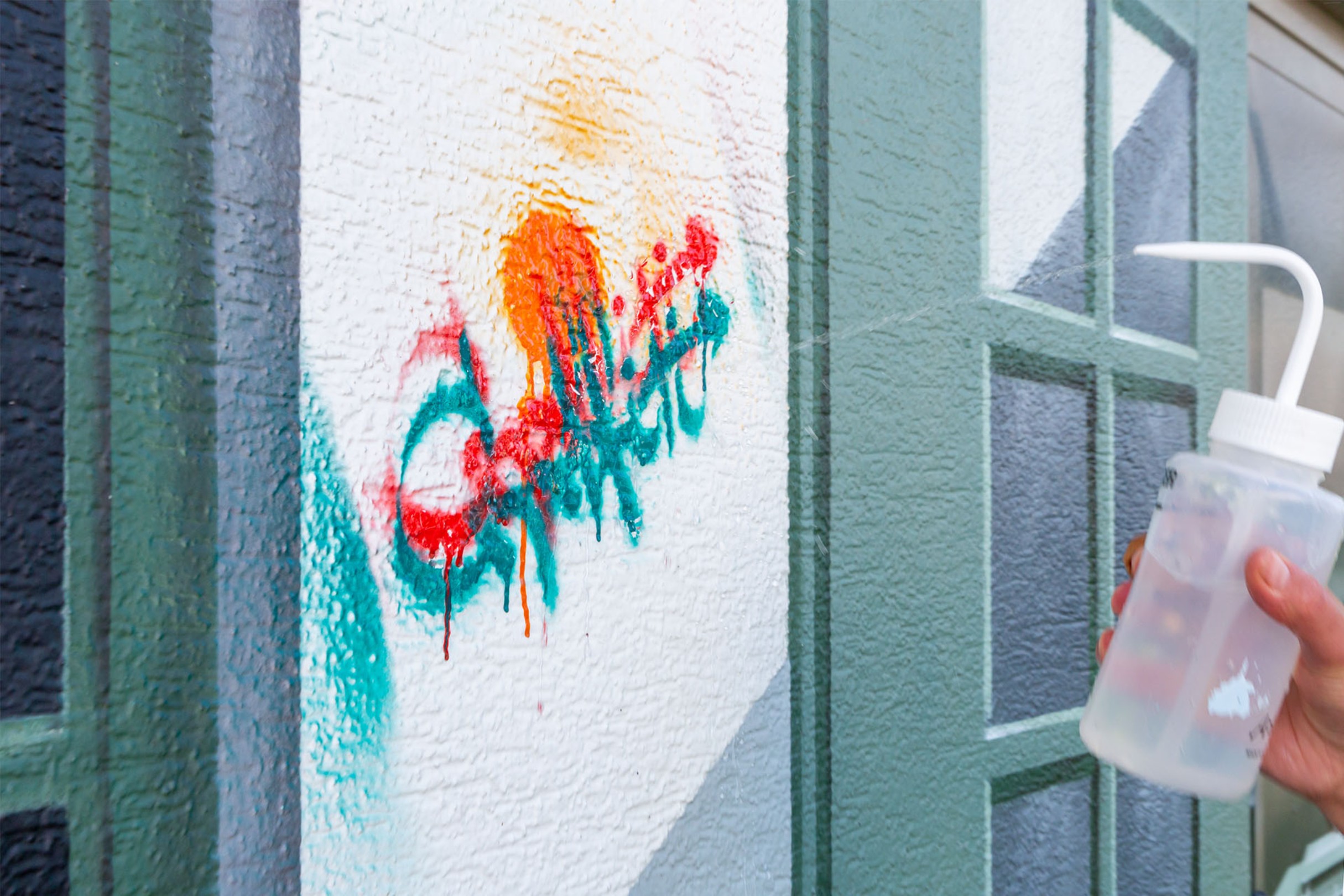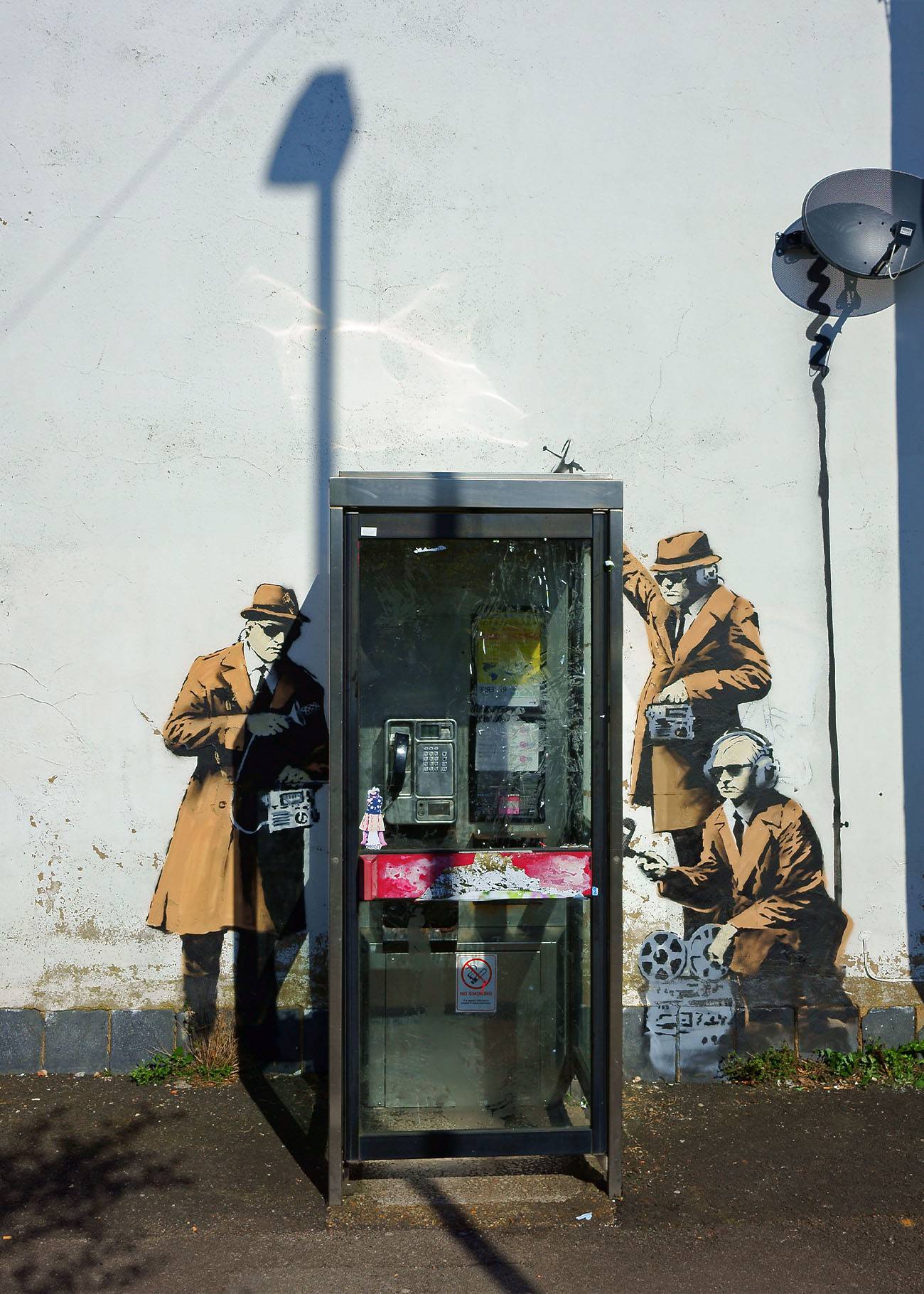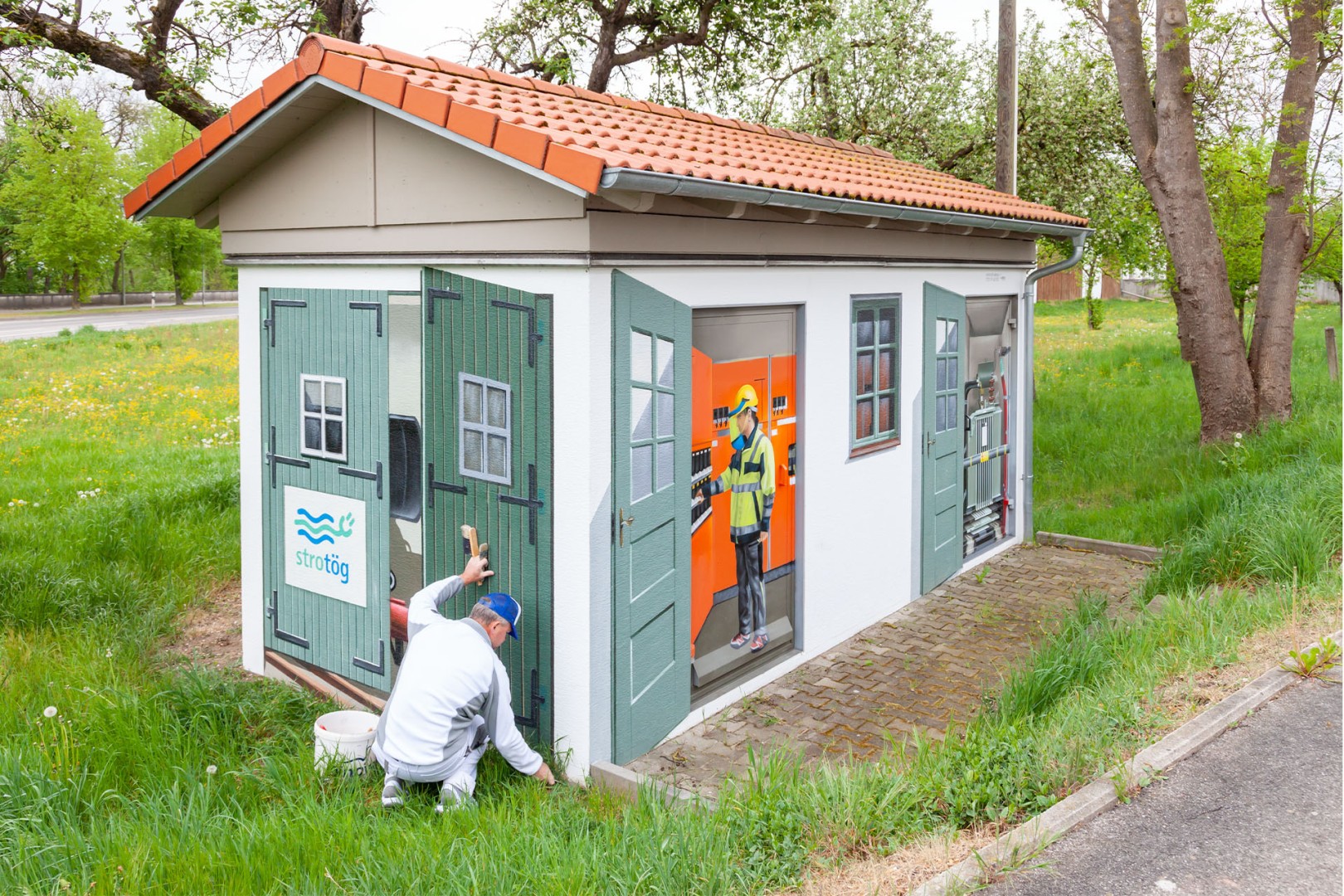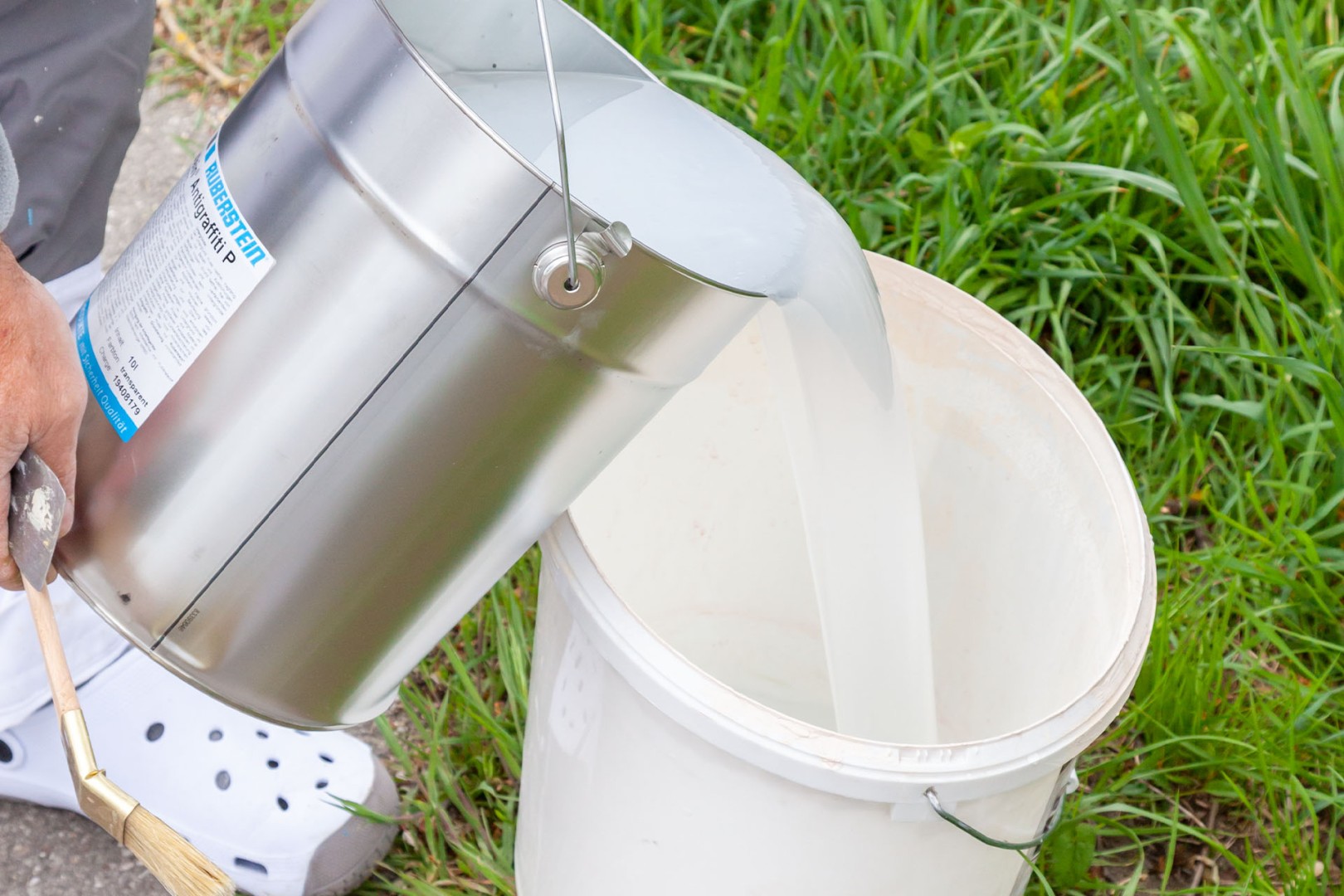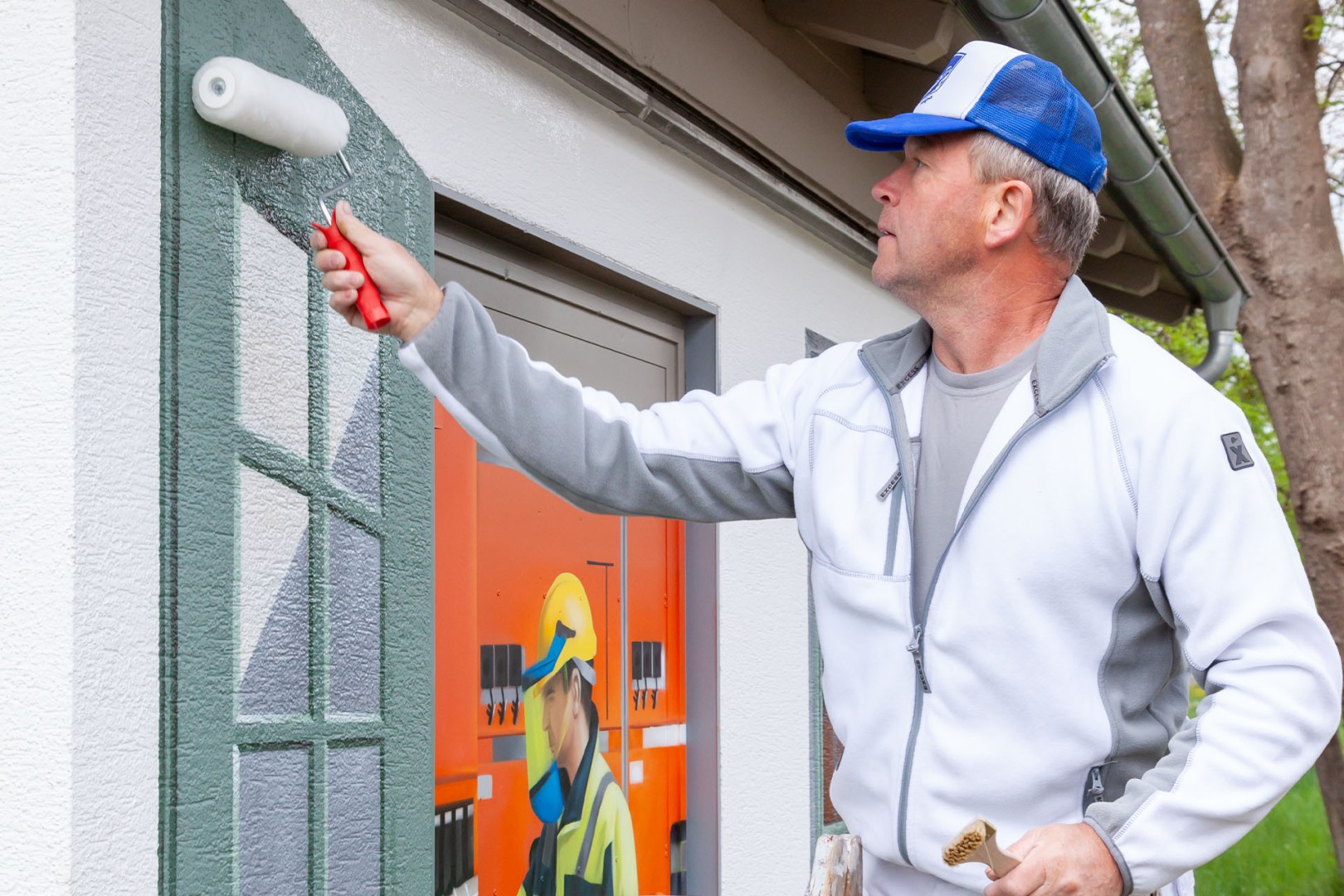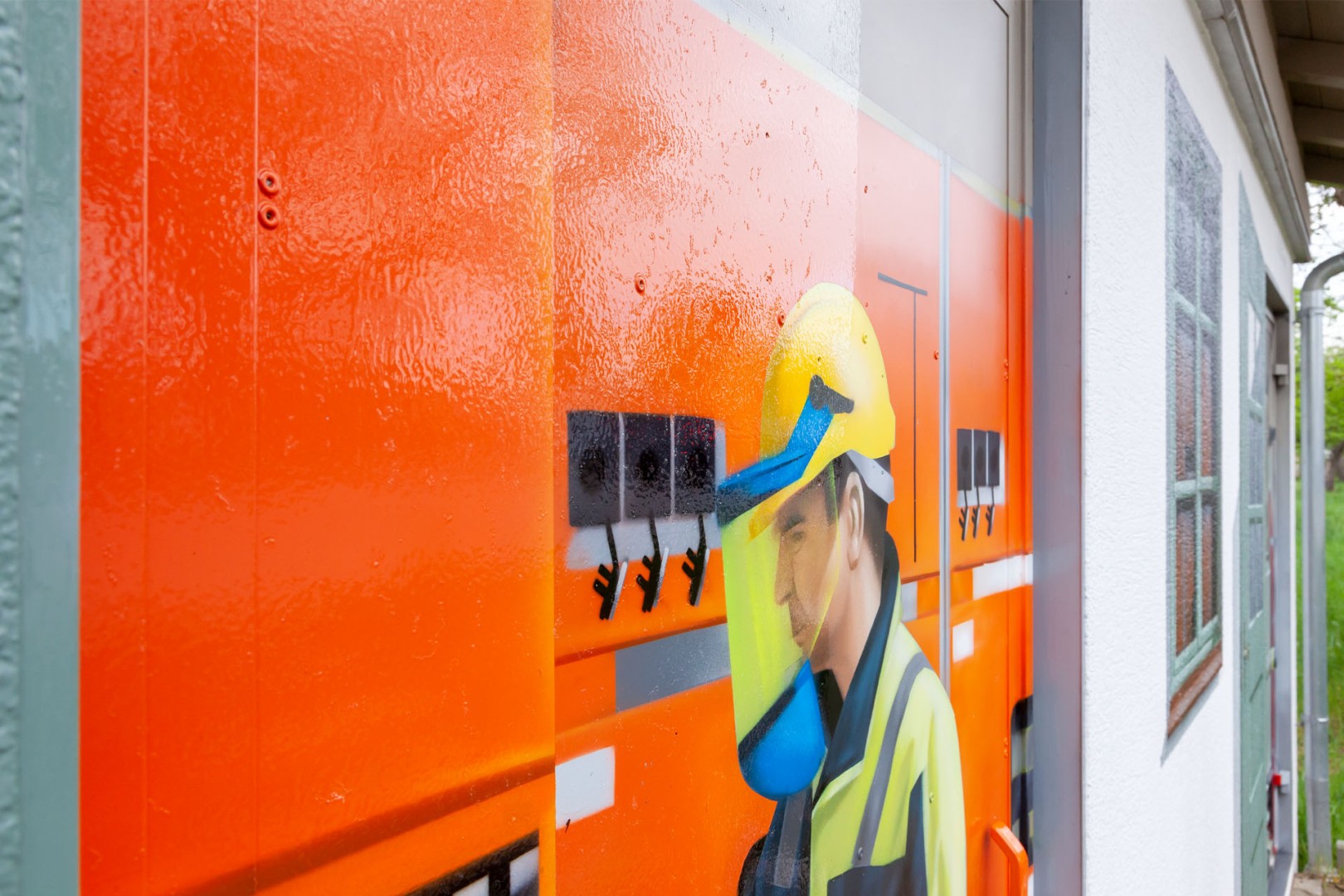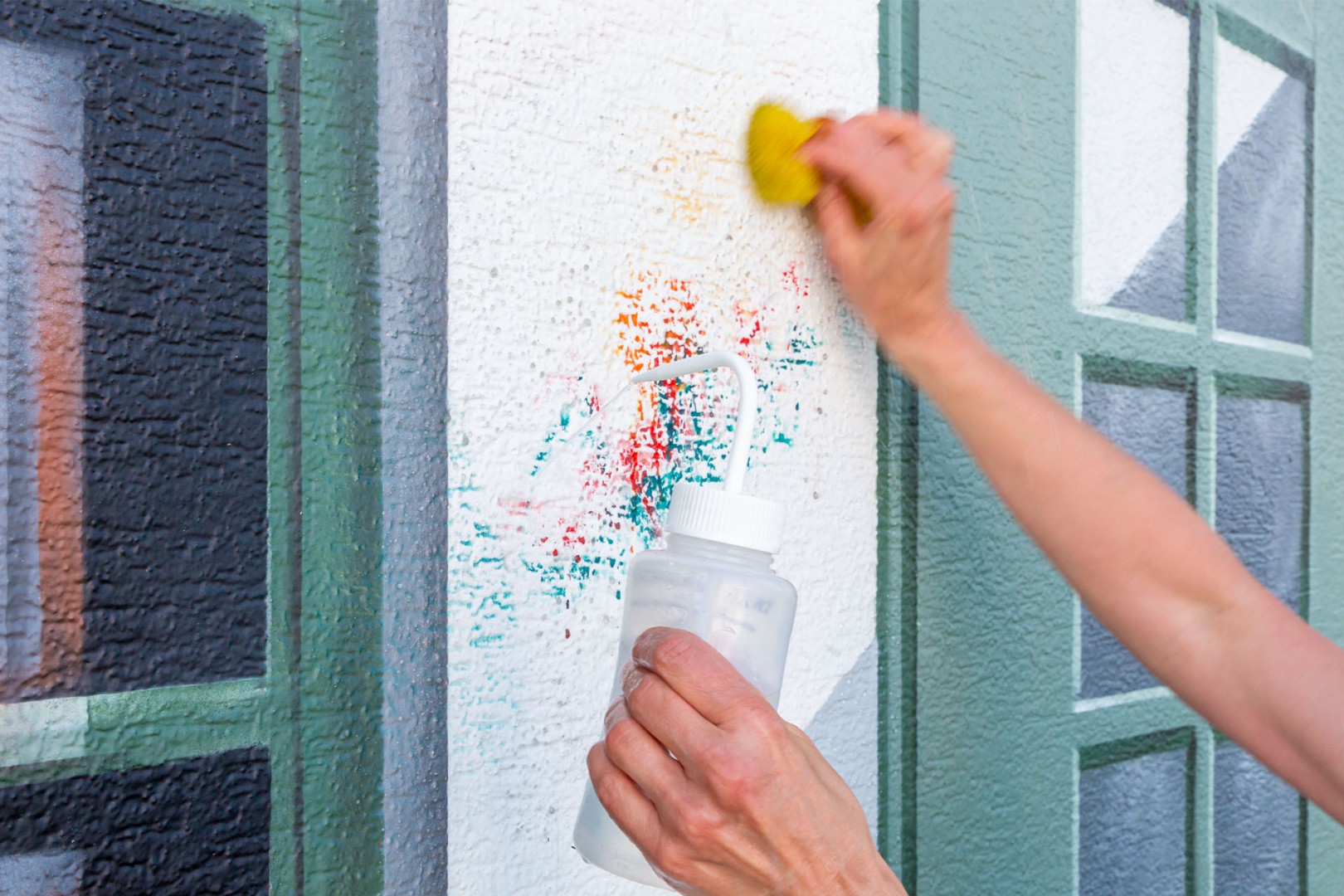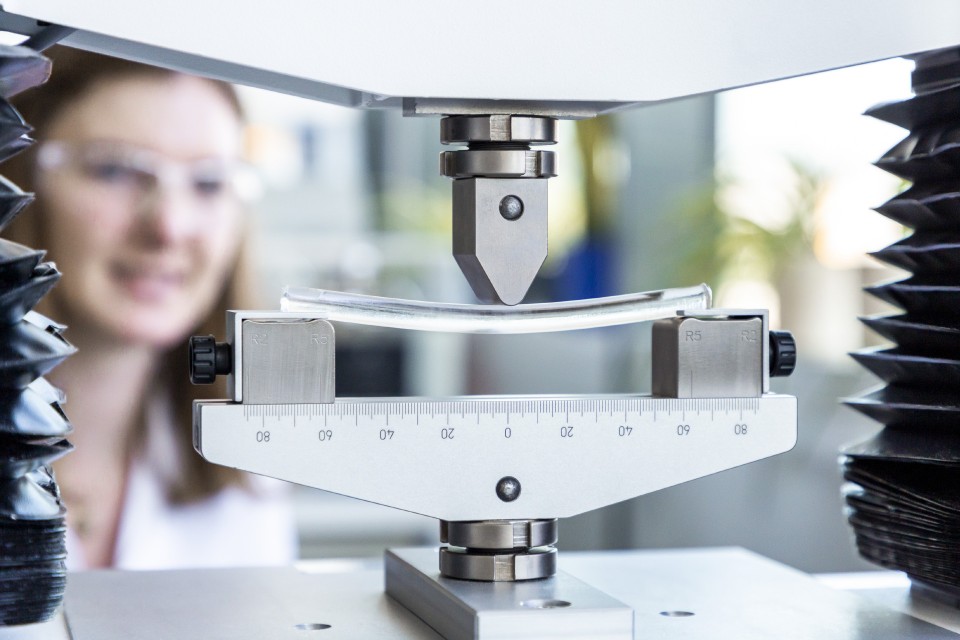
Highly pigmented acrylic paints and nitrocellulose lacquers are difficult to remove.
Nov 10, 2020 Read time: approx. MinutesMinute
Protective Shield for Street Art
Time was when antigraffiti coatings based on SILRES® BS 710 could only be used on open-pored surfaces, such as concrete. But thanks to a newly developed primer, it is now possible to treat smooth, non-mineral surfaces as well. Thus graffiti of artistic merit can be protected from obliteration.
An unwritten rule of street art is that over-painting someone else’s graffiti is taboo. Genuine graffiti artists would never stoop to such “crossing out.” But not everyone sticks to the rules. “This disrespectful behavior also ruins those pieces of graffiti which have artistic merit,” says Marianne Kreuzpointner, Marketing Manager for Construction Chemicals at WACKER SILICONES, who has recently been struck by the frequency with which such works of art are now appearing. Consider the case of three transformer housings belonging to the Strotög utility company in Töging am Inn, not far from the WACKER site in Burghausen. “About two years ago, we took a decision to have these housings decorated by professional graffiti artists from Potsdam,” says Andreas Vogl, technical director at Strotög. “But unfortunately there will always be vandals who feel they have to leave their own mark on things.” So, the phone call he received from Marianne Kreuzpointner at WACKER about an effective protective system came at just the right time.
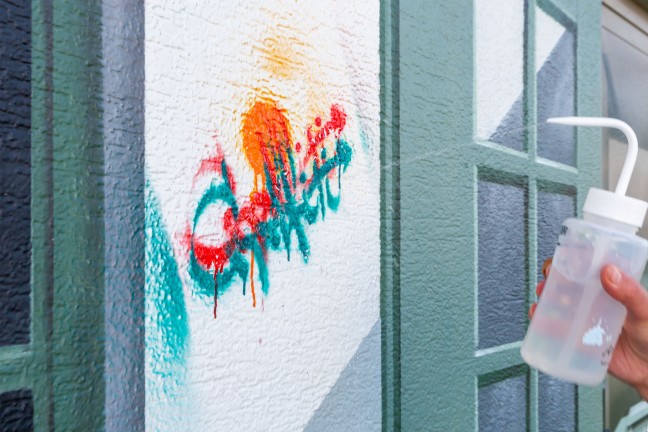
The proof of the pudding is in the eating: graffiti on the mural is simply removed with water and a sponge. The silicone film can easily withstand more than 20 cleaning cycles.
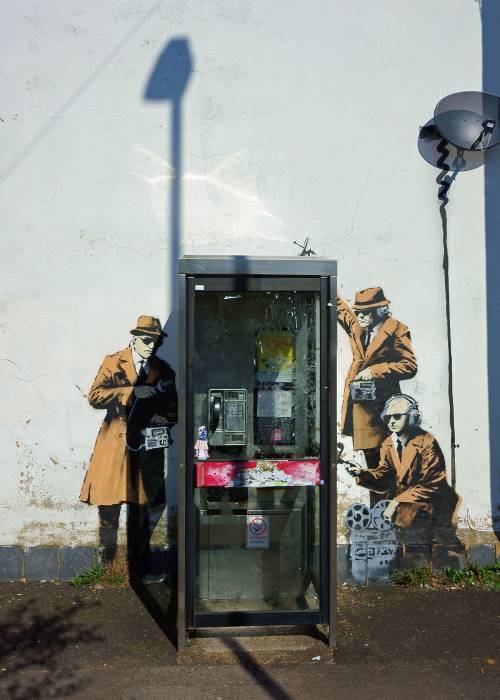
Graffiti from Banksy, the world’s most famous street artist, who prefers to work with stencils. They are among the works of art that can be protected using SILRES® BS 710.
Removal without Damage
The expert at WACKER specializes in permanent facade coatings from which graffiti can be washed off more easily and with less environmental impact. Removing the aggressive graffiti paint costs substantial sums of money and cleaning up spray attacks can damage the surfaces of defaced facades. Consequently, there is great demand for technologies that can provide lasting protection for buildings. Alfred Martius, a technical service engineer at Rubersteinwerk GmbH in Saxony, is all too familiar with the issue. “As a company specializing in chemical dampproofing and in the management, repair and restoration of cultural resources, we have been working with WACKER for many years and we enjoy very close ties to their team,” he says.
As far back as 2016, the experts at Rubersteinwerk began using silicones from WACKER for their antigraffiti coatings, especially SILRES® BS 710. This one-component silicone rubber cures at room temperature and in atmospheric moisture to yield a silicone elastomer that provides long-lasting protection for surfaces. SILRES® BS 710 is the active ingredient contained in the antigraffiti product made by Rubersteinwerk. “We combine it with other ingredients to produce a sales formulation. After all, the coating needs to be easy to use. This entails getting the consistency right so that painters can produce perfect results whether they use a brush, a roller or an airless spray device,” explains Martius. The task of protecting graffiti masterpieces required a further development step to ensure that SILRES® BS 710 would adhere to smooth surfaces.
“First of all, we tested and sounded out how effective the product was on facades, i.e. on absorbent mineral surfaces such as concrete, natural stone and tile surfaces,” says Dr. Hartmut Ackermann, head of the applications laboratory for construction chemicals at WACKER in Burghausen. The rationale for testing these substrates was that tags and paints adhere to the surface, become anchored in the pores close to the surface of the masonry and are hard to remove. But it soon became clear to him and Kreuzpointner, his colleague from marketing, that non-mineral or smooth surfaces, such as metals, plastics, wood, glass and coated surfaces, would have to be included as well. Not forgetting facades that have already been given a graffiti “makeover.” “The SILRES® BS 710-based antigraffiti coating wouldn’t be able to adhere very well or for very long to the graffiti on the transformer housings in Töging,” says Dr. Ackermann. The solution was to develop a bonding agent that enables SILRES® BS 710 to adhere steadfastly to the graffiti to be protected.
A new product had to be developed to protect graffiti masterpieces.
Dr. Hartmut Ackermann, Head of Application Technology, Construction Chemicals, WACKER SILICONES
Primer Optimizes Adhesion
Dr. Ackermann and his team of chemists killed two birds with one stone by developing a prime-coating agent from a combination of silanes and silicone resins. This was used by the technical team at Rubersteinwerk to formulate an off-the-shelf sales primer. “The product is very thin and provides very high coverage – it only takes 50 milliliters per square meter. The colorless primer dries in half an hour and the antigraffiti coating can then be applied,” explains Martius from Rubersteinwerk. The prime-coating agent from WACKER optimizes the adhesion to other organic systems – namely, spray paints. At the same time, it improves the adhesion of the subsequent protective coating.
“Porous substrates need around 250 milliliters of the antigraffiti product per square meter. For smooth substrates, 150 milliliters is enough,” he adds. The protective coating is tack-free after about four hours and is left to cure for a day to form a permanent film of silicone that provides lasting protection against attacks with spray paint.
“To show that the graffiti works of art on the transformer housings in Töging were fully protected and that they can be cleaned quickly and easily, I even slipped into the role of legal sprayer,” says Kreuzpointner with a wry smile. To which Vogl from the Strotög utility company adds: “It really is impressive to see how easy it is to clean the treated facade by simply hosing it down with water. We know only too well how difficult it used to be to remove spray paints.”
The reason that graffiti, posters and the like adhere so poorly to the silicone film is that the silicone has a particularly low surface tension. However, the sprays and tags have a high surface tension and so fail to form a coherent spray pattern.
But the roughly 100-micrometer-thick antigraffiti coating has further advantages to offer: the silicones crosslink amongst themselves to yield a durable, yet elastic film that can accommodate movement by as much as 30 percent. This effectively bridges cracks and surface irregularities and preserves the painted substrate from damage. And all the while, the film acts as a breathable barrier. Atmospheric moisture is able to pass through the masonry, which therefore does not serve as a breeding ground for microbes. What is more, the prophylactic treatment is long-lasting: the silicone film easily withstands more than 20 cleaning cycles. And it defies heat and UV light without turning yellow. “The coating we applied to the facades four years ago is still intact. And should the protective skin get damaged at some point, it is very easy to repair,” explains Kreuzpointner, adding that she hopes the graffiti on the transformer housings in Töging will enjoy a long life without coming to any harm.
Three Systems for Preventing Graffiti
Coatings can be temporary, permanent or semi-permanent.
Temporary
Temporary systems are made of waxes, biopolymers or acrylates. The protective film is invisible and can be used on listed buildings. A further advantage is that the systems are breathable. This means that moisture can evaporate from the building fabric. However, by their nature, such films do not provide lasting protection, as they have to be removed and completely replaced every time they are cleaned. Even in the absence of graffiti attacks, these coatings will only last a few years.


Semi-Permanent
In semi-permanent systems, only one component of the film is lost during cleaning. The substrate has to be treated again every time graffiti is removed and at intervals of three to five years. The advantage of semi-permanent coatings is that they are barely visible and are permeable to water vapor. These products often consist of blends of organic waxes, silanes and siloxanes.
Permanent
The major advantage of permanent antigraffiti systems is that they remain intact when the graffiti is removed and can last many years without losing their ability to protect the surface. The downside, however, is that these products usually affect the appearance of the substrate. In addition, many products seal the surface and thus prevent the natural passage of moisture. The protective film detaches in some places as a result, potentially causing blisters to form or the paint to flake off. Moisture damage to the building fabric is also possible. Because the new WACKER product consists of water-vapor permeable silicones, this undesirable side-effect does not occur.

Contact
For more information on the topic, please contact
Mrs. Marianne Kreuzpointner
Marketing Manager
Construction Chemicals
+49-8677-83-2388
Send message

